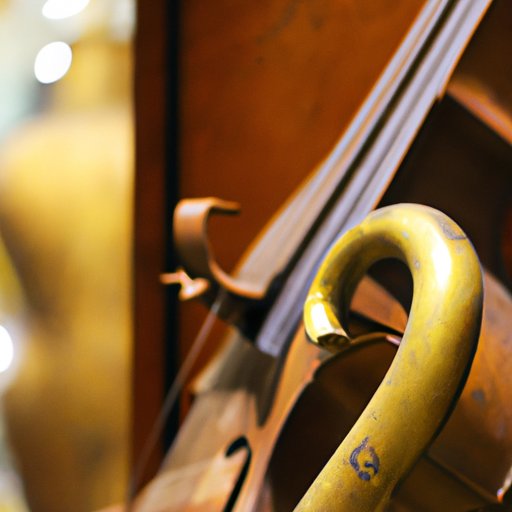Introduction
Music is more than just a collection of notes and rhythms. It is a complex combination of various elements that work together to create a unique and meaningful experience. One essential aspect of music is timbre. Understanding music timbre is crucial for anyone who wishes to create or enjoy music to the fullest.
Timbre is what gives sound its unique color or character. Think of two people singing the same note. Even though the pitch is the same, their voices sound different due to timbre. This article will explore music timbre in-depth and explain why it is worth delving into.
The Colors of Sound: Understanding Music Timbre
Music timbre is the quality of a sound that distinguishes it from others. It is what allows us to differentiate between different instruments playing the same note, or even two people singing the same song. Timbre is also referred to as the tone color or sound color of a sound. Understanding timbre is vital for music composition and performance.
Timbre provides depth and adds richness to music. It can also convey emotions, moods, and atmospheres. By varying the timbre of instruments or voices, composers can create intricate soundscapes that are far more intriguing. Timbre plays a massive role in how we differentiate between different genres of music or even different songs in the same genre.

Musical Instruments: The Tone and Character of Sound
Perhaps the most apparent way that we experience various timbres is through musical instruments. Different types of instruments, such as woodwind or brass instruments, have distinct tonal characteristics that set them apart. Even within the same family of instruments, such as the guitar family, there are noticeable differences in tone depending on the type of guitar used.
For example, an acoustic guitar has a bright, warm tone, whereas an electric guitar can produce a wide range of sounds, from clean, twangy notes to distorted, hard-hitting chords. Similarly, the piano has a unique sound, with each note having a different quality due to the varying length and thickness of the strings.
The Magic of Music Timbre: How it Affects Our Emotions
Timbre is also significant in how it can evoke emotions in listeners. Certain timbres are known to invoke specific feelings or moods. For instance, a deep, resonant sound can be both calming and ominous, while a bright, light sound can evoke feelings of joy and optimism.
The use of timbre in music is evident in many popular songs and film soundtracks. Each instrument and the way it is played contribute to the overall mood and emotion of the piece. For example, in the iconic theme for Jaws, the ominous tones of the double basses and cellos create a sense of dread, while the light, flickering tones of the xylophone in the Harry Potter theme evoke a sense of wonder and magic.
The Science of Sound: Exploring Music Timbre in Acoustics
Understanding the science behind sound waves is essential for comprehending timbre. Sound waves are made up of various frequencies or cycles per second, which determine the pitch of a sound. However, the shape of a sound wave determines its timbre.
There are many factors that determine the shape of a sound wave, such as harmonics, overtones, and resonance. For example, the harmonics produced by a specific instrument create its unique tone color. The overtone series of a sound is responsible for the harmonics that are produced by different instruments and contribute to their timbre.
Timbre in Popular Music: Trends and Evolution
The way we use and perceive timbre in popular music has evolved over the years. Different genres of music have distinct timbral characteristics that set them apart. For example, the warm, organic sounds of the 60s and 70s folk music contrast with the bright, electronic sounds of modern pop music.
Artists and production techniques have also influenced the use of timbre in music. For example, the introduction of synthesizers and electronic music allowed musicians to produce sounds that were not possible with traditional instruments, leading to new timbres.
Manipulating Music Timbre: Creative Possibilities in Audio Production
Audio producers often manipulate timbre to create new and exciting sounds. By combining and layering multiple sounds, producers can create complex timbres that are distinct and unique. Timbre manipulation techniques such as equalization, distortion, and reverb can be used to create various effects and textures.
The creative use of timbre can be seen in many modern songs and albums. For example, the iconic autotuned vocals in Daft Punk’s “One More Time” add to its futuristic and electronic feel. Similarly, the use of heavily distorted guitar riffs in “Smells Like Teen Spirit” by Nirvana adds to its raw and grunge-like sound.
Conclusion
Understanding music timbre is critical in creating and enjoying music. Timbre provides depth, richness, and emotion to music and is what allows us to differentiate between different instruments and sounds. Exploring the science of sound waves and analyzing trends in popular music can broaden our understanding of this essential aspect of music. Whether listening to music or creating it, understanding timbre can enhance the experience.
